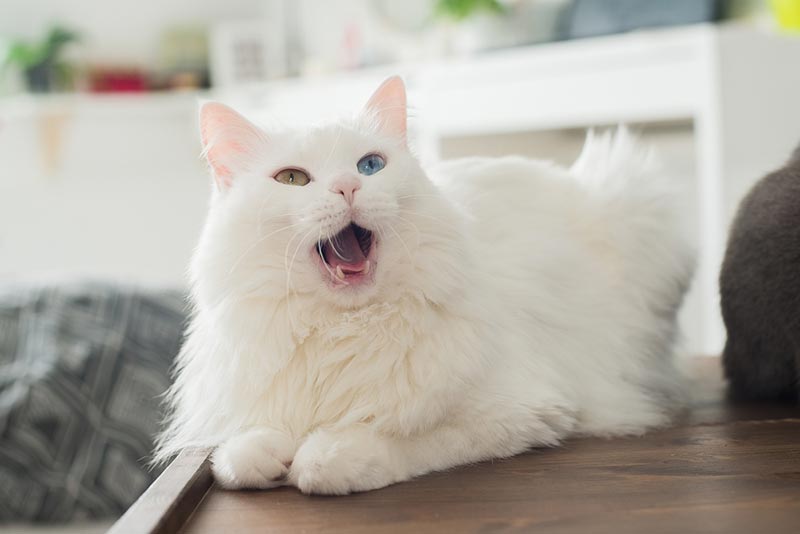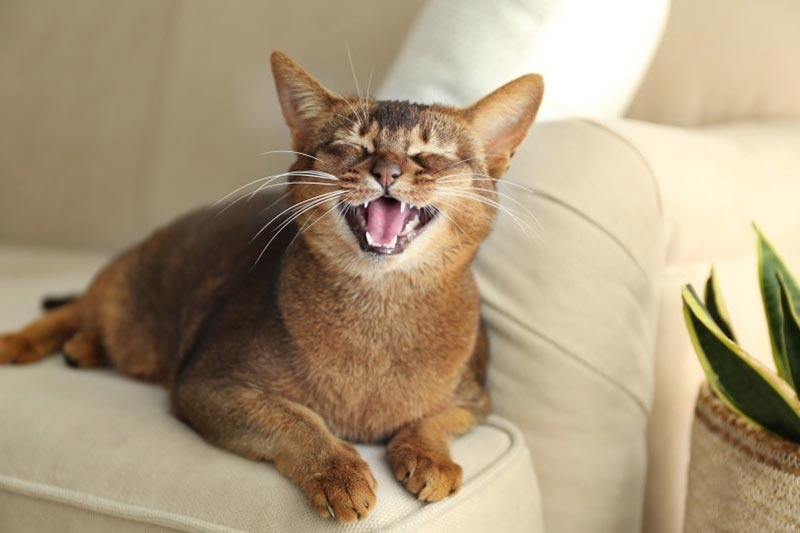VET APPROVED

The information is current and up-to-date in accordance with the latest veterinarian research.
Learn more »Click to Skip Ahead
Though typically much quieter than their canine counterparts, cats can be noisy! They’re not afraid to meow or hiss at you to communicate their satisfaction or agitation. Though some sounds that escape a cat’s mouth are more jarring than others, it is the meow you’re likely to hear most often.
The average cat’s meow is around 45 dB in sound intensity. But what does that mean? It means little to the average person with no understanding of decibels. You can keep reading if you’re wondering how a cat’s meow stacks up to other sounds like ticking watches or whispers.

How Loud Is a Cat’s Meow?
Most cats are believed to meow at a sound intensity that registers around 45 dB. However, expressive cats or those that want to get your attention can meow as loud as 80 dB.1 On the other hand, dogs can bark anywhere between 60 and 120 dB.2
If you’re not an audiologist, the talk of decibels might fly over your head. However, our list of everyday noises below will give you an idea of how the sounds compare to a cat’s meow.
| Noise | Decibel Level |
| Ticking watch, leaves rustling | 20 dB |
| Whispers | 30 dB |
| Library | 40 dB |
| Moderate rainfall | 50 dB |
| Background music, normal conversations | 60 dB |
| Office noise, vacuums | 70 dB |
| Alarm clocks, power lawn mower | 80 dB |
| Power tools, food blenders | 90 dB |
| Snowmobiles, ATVs | 100 dB |
| Chainsaw, leaf blower | 110 dB |
| Jet planes during take-off, concerts | 120 dB |
| Ambulances, stock car races | 130 dB |
| Gunshots, fireworks | 140 dB |
Permanent hearing loss can occur after exposure to sounds over 85 dB for extended periods.
Why Do Cats Meow?
Cats meow as a way of communicating with humans. They develop a repertoire of different sounds and pitches to express their needs and feelings. They may quickly learn you’ll get them what they want when they meow at you.
- Saying hello
- Trying to get your attention
- Asking for food or to be let outside
- Expressing happiness
- Displaying distress

Which Cat Breeds Are the Most Vocal?
Even though specific breeds share many of the same personality traits, every cat is unique. Some cats may naturally be chattier than others, while certain breeds are known for their vocalizations. Some of the most vocal breeds, anecdotally, may include:
- Bengals
- Burmese
- Orientals
- Siamese
- Japanese Bobtails
- Sphynx
- Turkish Vans
- Turkish Angoras
- Maine Coons
How Loud Are Other Cat Sounds?
Cats don’t just meow, either. Studies suggest that they can make up to 21 different vocalizations. They make other happy sounds like trills, squeaks, and purrs; each sound can vary in intensity by gender.
A 2019 study compared the length, frequency, and intensity of four common feline vocalizations by gender.
- Trills varied in intensity from 52 dB (male) to 60 dB (female).
- Squeaks varied in intensity from 50 dB (female) to 61 dB (male).
- Chatters were not noted in males but were found at 50 dB for females.
- Purrs varied in intensity from 45 dB (male) to 47 dB (female).


Conclusion
Though cats are significantly quieter than dogs in general, any cat owner can tell you how loud they can be when their meows are incessant. So, if your kitty has been meowing a lot lately, remember that they’re trying to communicate something with you. What are they trying to tell you? Check out this blog to find out.
Featured Image Credit: New Africa, Shutterstock











